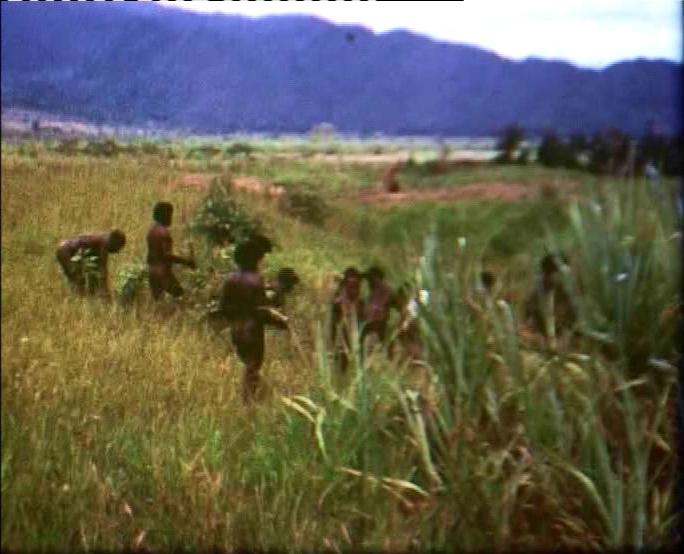

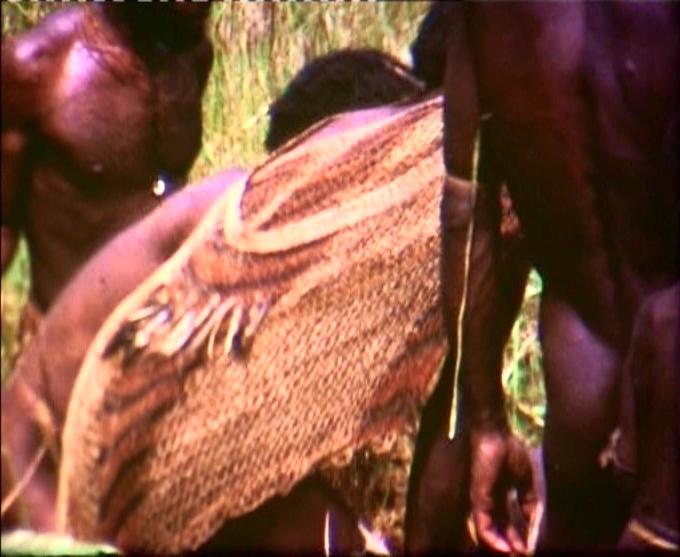

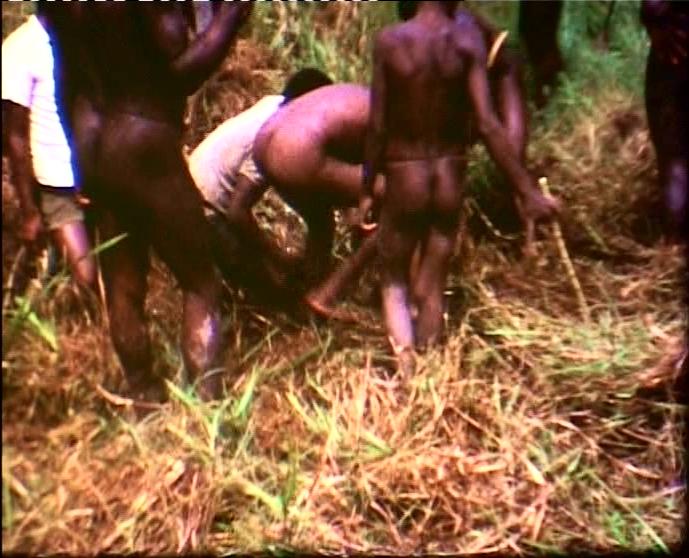

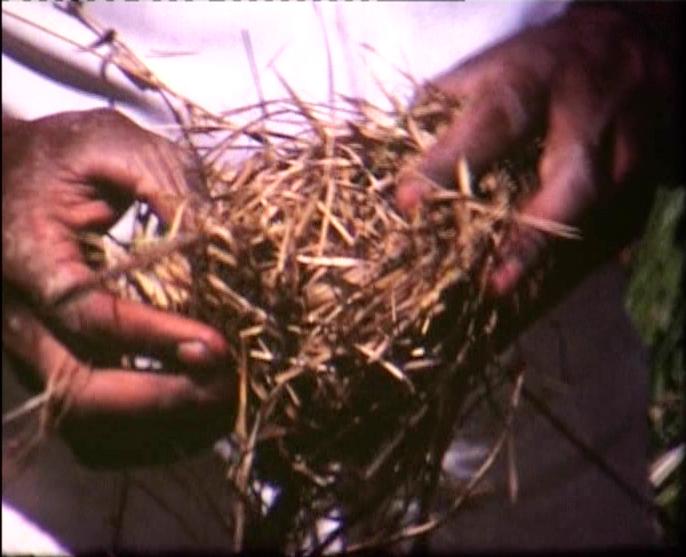

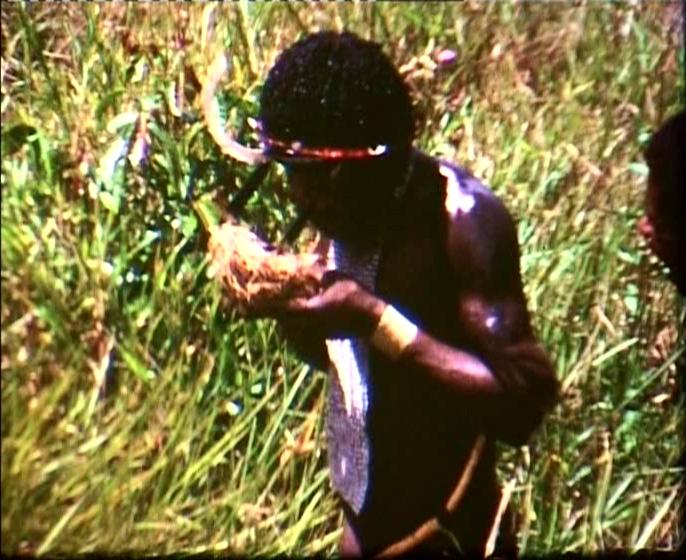

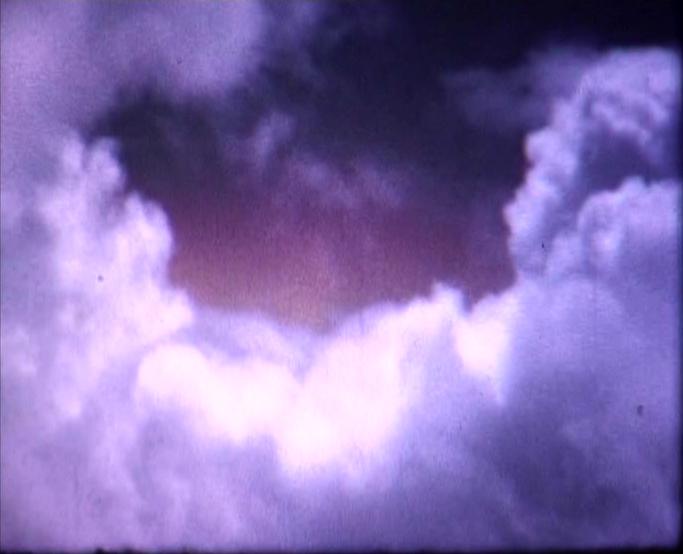

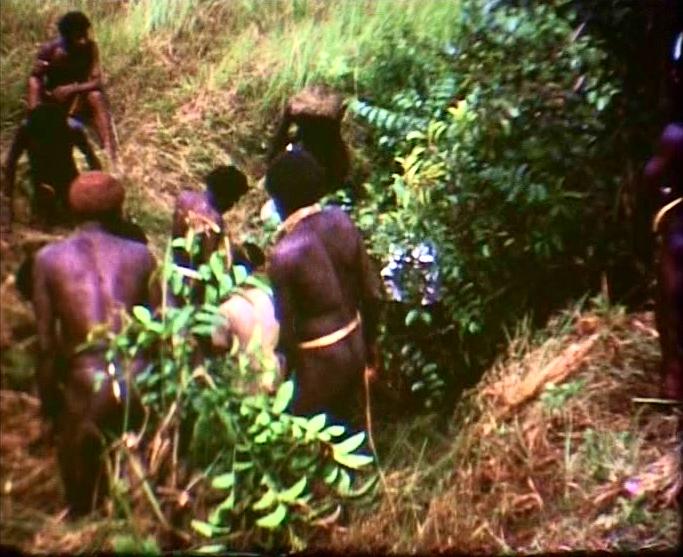

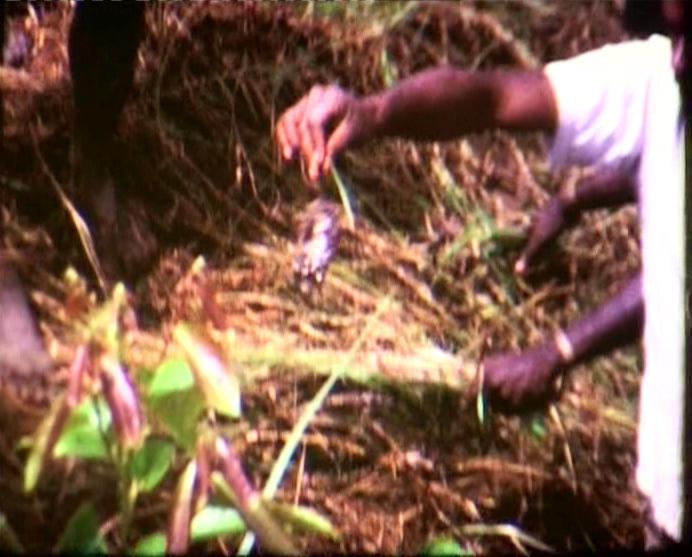

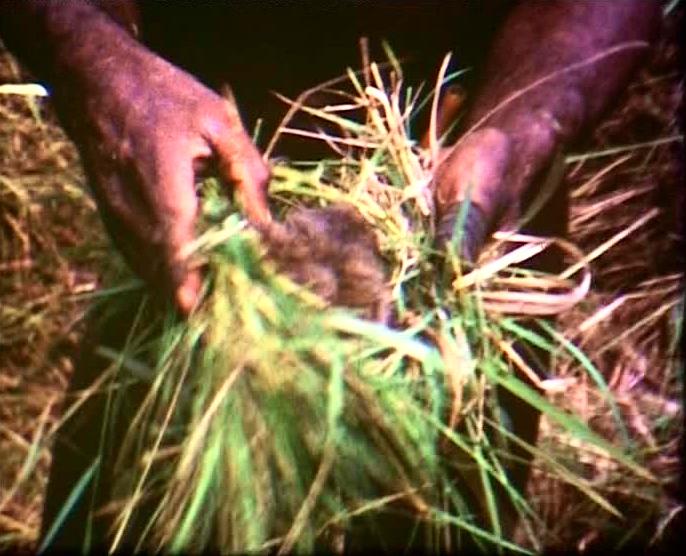

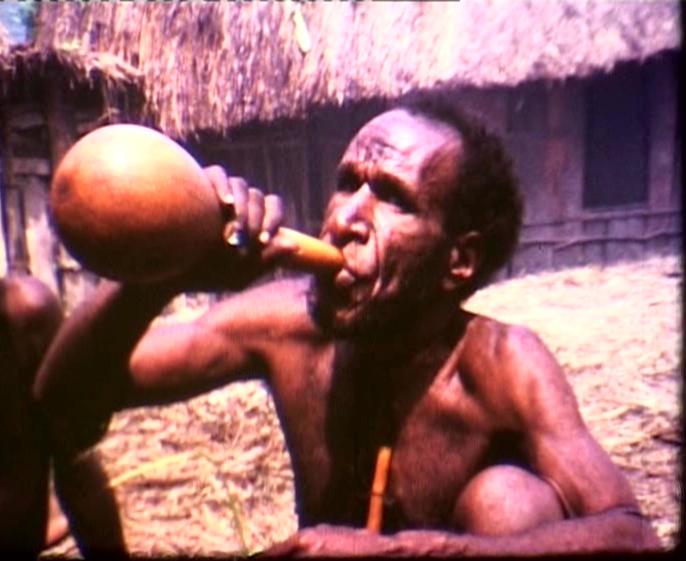

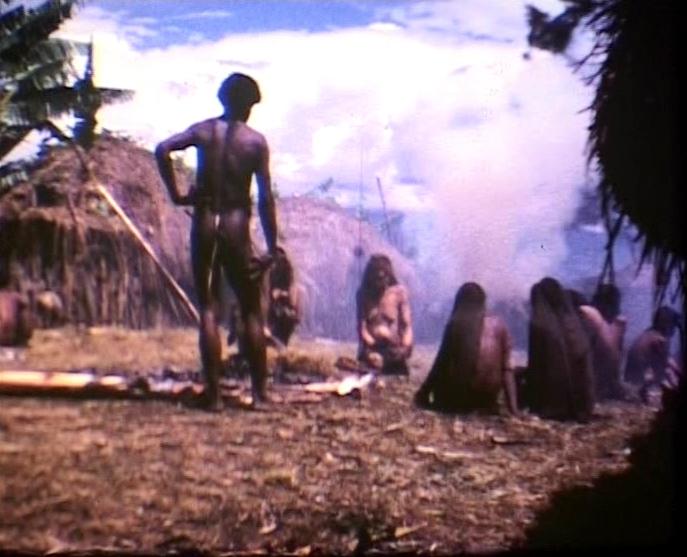

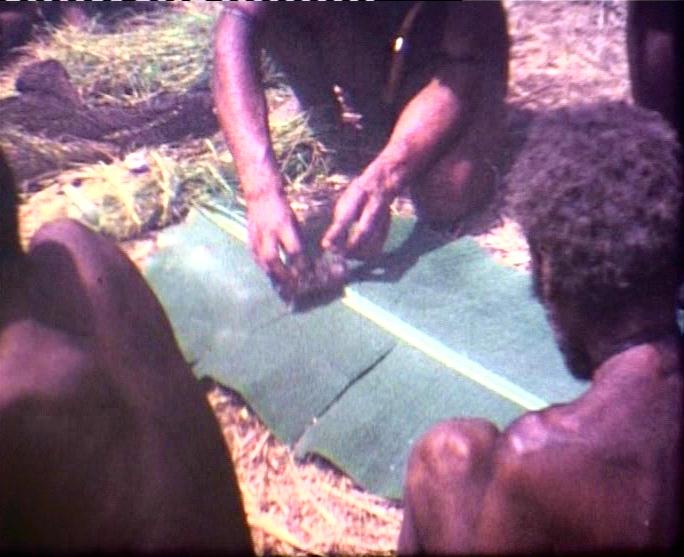

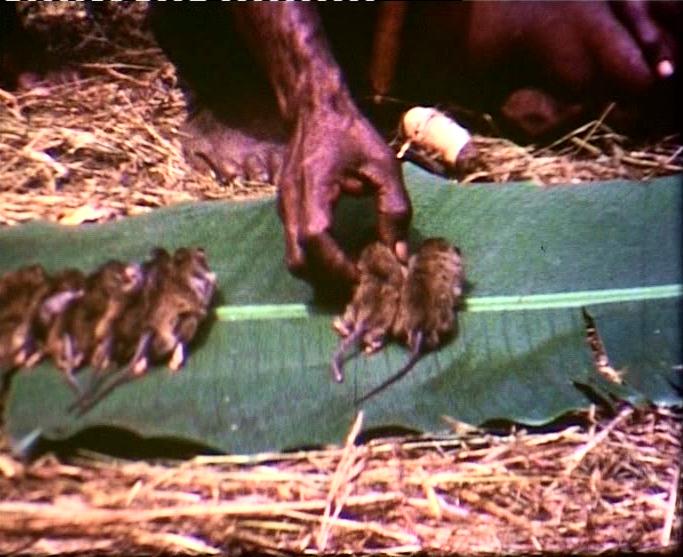

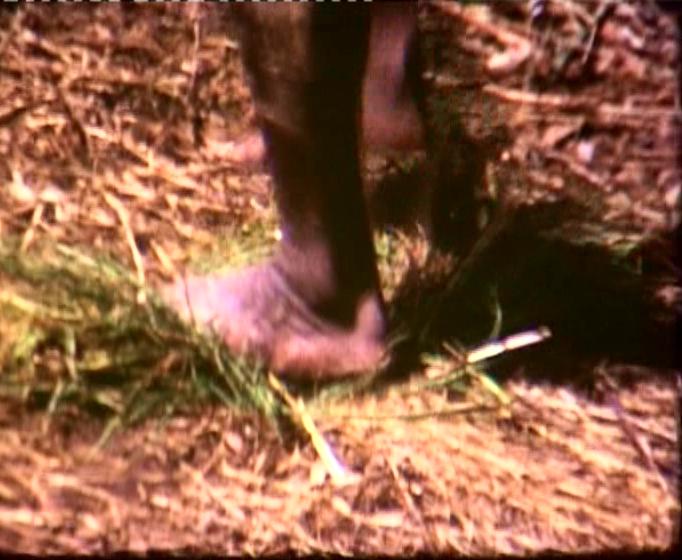



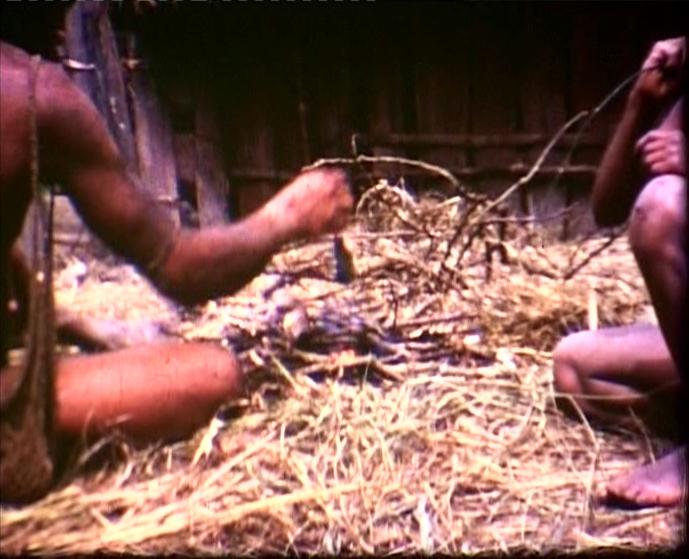

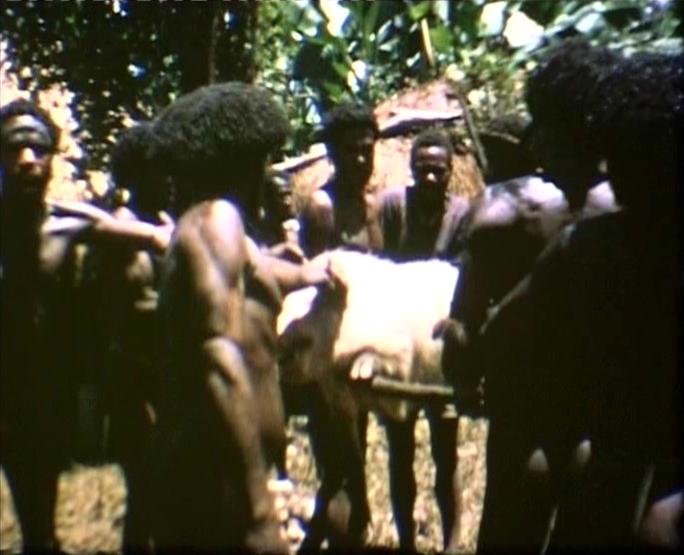

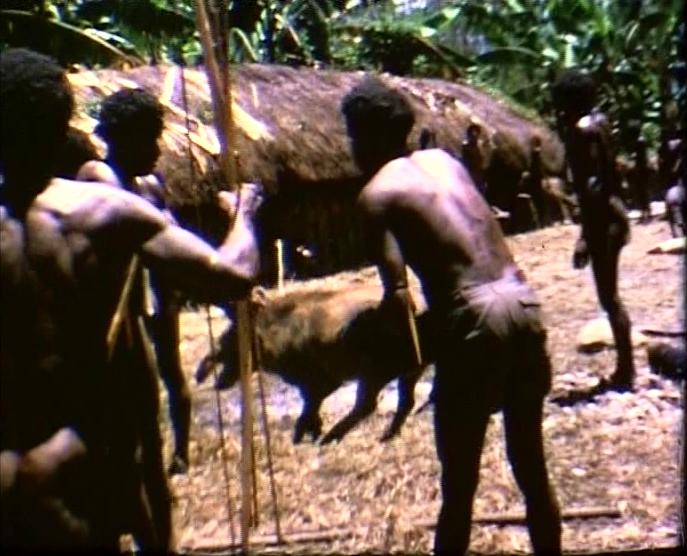

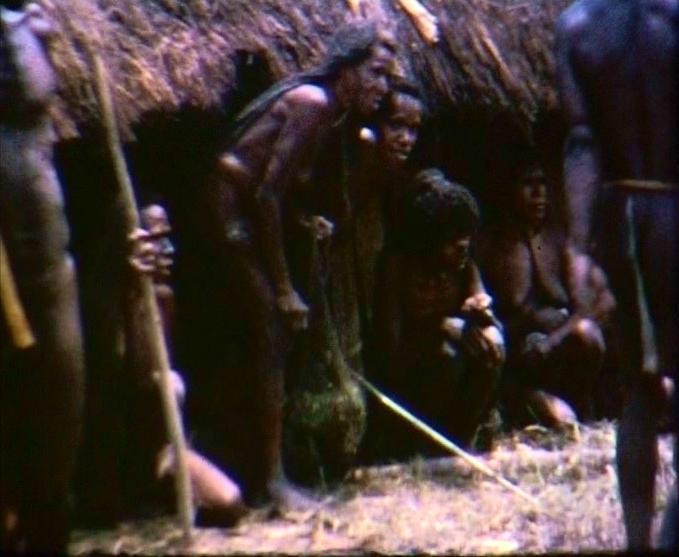



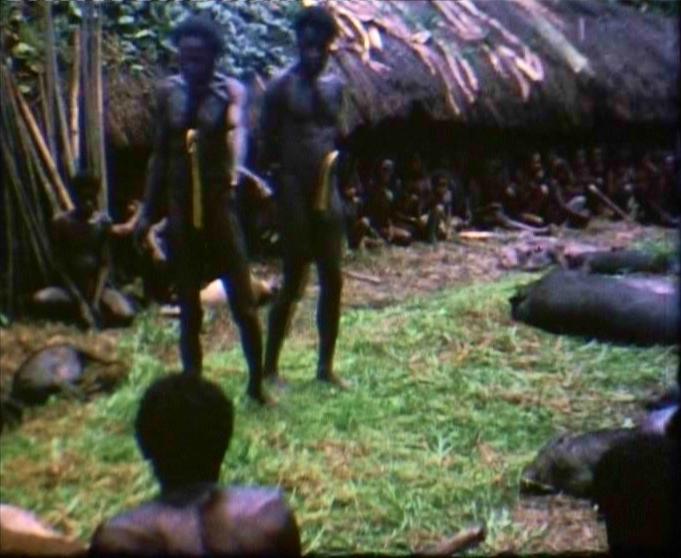

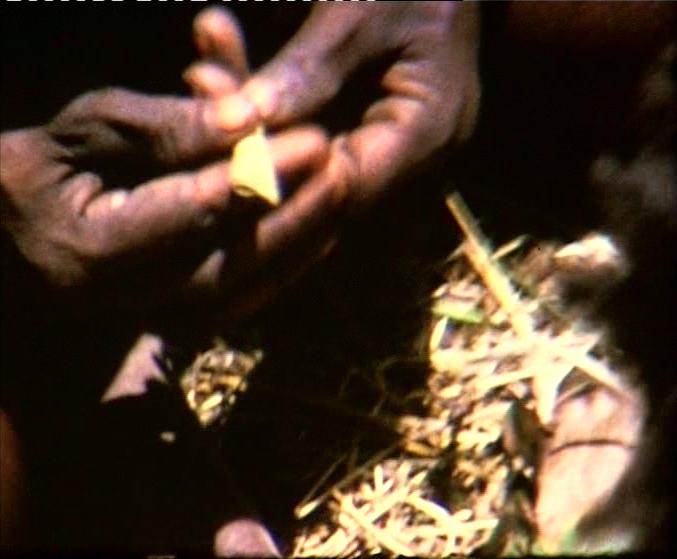

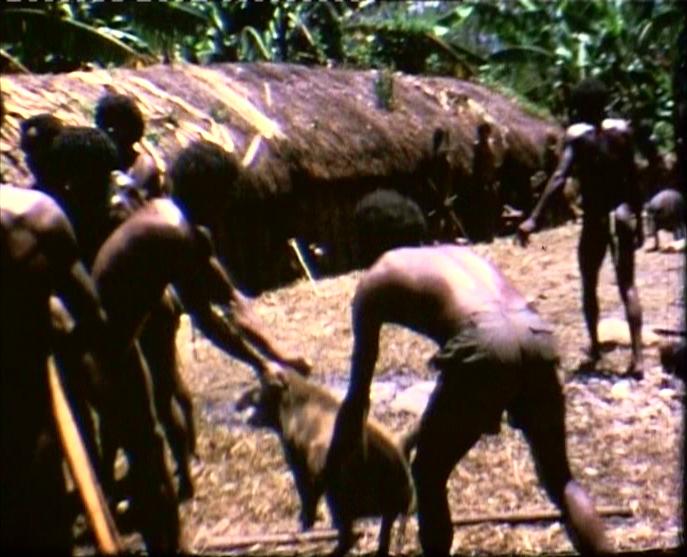

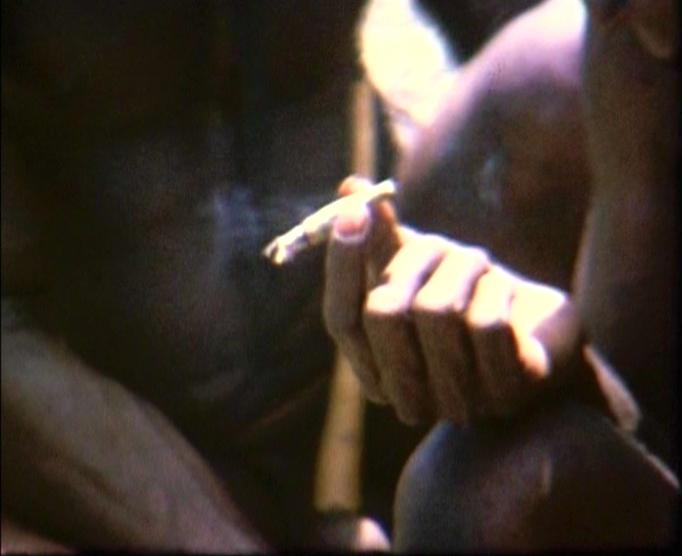

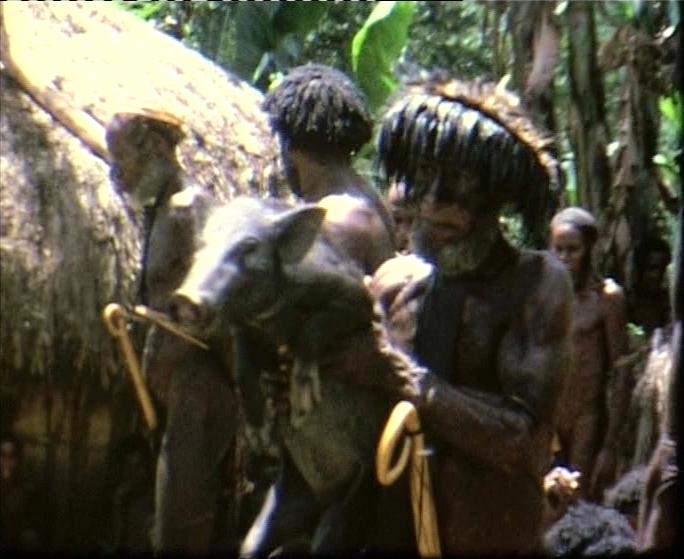

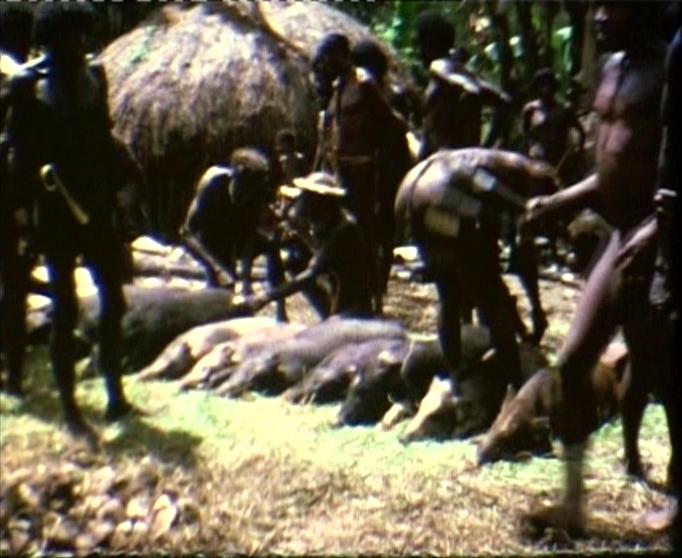

Lijkverbranding II
Funeral Rites II
Objectcode
FI/40/12
Film by father Jules Camps OFM, recorded in the 1970s in his work area in the highlands of Irian Jaya. Funeral Rites, Part II, sequel to Funeral Rites I (Camps 30). This film shows the rites on the third day after the death, in particular the divination of the cause of death, and the party, Wam Ilkho, two months after the passing.
Contents
"Funeral Rites II" is the first part of Camps 31. The second part is called "Hotaly Pupukhe". Film: Super-8 ; Kodachrome II ; Colour Length : Funeral: approx. 40 meters Hotaly : approx. 30 meters Running time : Funeral: approx. 10 minutes Hotaly : approx. 8 minutes Filming Date : Funeral: July and September 1971 Hotaly : August and September 1971 Place : Yiwika, Baliem Valley, West Irian. Filmed by : J.A.E. Camps ofm. Description of Funeral Rites II : Funeral Rites II is a continuation of the funeral rites conducted for the girl named Keamente, the first part seen as Funeral Rites I (Camps 30). In that film, the first two days activities of the rites held almost immediately upon a person's death are shown. This film continues with the rites held following a death on the third day. These rites surround the divination of cause of death. Immediately following this is a section on the Wam Ilkho which is also part of the long sequence of funeral rites. This ceremony or feast is held after two months or so following a person's death. The third day's rites are centred upon determining why the person had died. Bagai wasin or killing mice was the closest term that was elicited from informants for this ceremony. Although this is really not satisfactory, no other term was known for this ceremony. The activity begins with the boys and men going into the fields in search of bagai, the rats and mice found there. The older brother of Keamente, named Nakliak, is seen carrying the su walon on his head to which are attached the tails of pigs killed for her funeral. Another, the bagai su, will be filled with the rats that are captured and killed, by pushing or putting pressure on their bodies until some internal damage causes their death. Apmabaga is seen holding a nest of rats found during the search. At one point the people notice some shades of red on the clouds and wonder of its significance. When the men are satisfied they have enough, they all return to the uma. A drink from the ioak is one of the first things sought by the thirsty hunters. In the uma the husband Watnom is seen mourning with two women who came a long distance for the funeral and only just arrived. The mice are laid out on a banana leaf, supposedly in the order of their capture. This is done by Ninarike in front of the pelai and only men are allowed. Ninarike joint by Ilagabek inspects the rats that have been caught. For all persons who die, rats will tell why. Ilagabek is ami to the mother of Keamente and opens up the stomach of the rats using the wam lisu. The stomach intestines are read and the cause of death is told to all. Later the intestines are trampled to clean them and hung on branches. These and the bodies will be baked on open fire and eaten. The divination of the intestines told why Keamente had died. According to the story given by the people, Keamente would have married a young man but it was impossible; he was a catholic and would marry another. She had given him a walimoken band as a sign of her wish. The boy was later sent to jail for stealing and there he was reported to have burned this band. Because of this action Keamente died. Although this is the story reported as a result of the divination, the real cause of death appears from the evidence to have been the result of an abortion attempt. Other reasons such as the kaneke being bad or not properly cared for were possible from the signs seen in the rat intestines. The wam ilkho follows next in the film. Wam ilkho is a ceremonial killing of pigs, in no apparent order or prescribed manner. The ceremony is held at a later time, perhaps two months after the funeral. In this, the ami of the dead is obligated to give pigs for the ceremony. It can be held for one person who has died, or a number of ami obligations can be completed at the same time for others who have died. The availability of pigs has much to do with the actual timing of this activity. The wam ilkho pictured here, took place in the uma of Wenabubaga. The pigs were killed in no order or place, simply where they were caught. The bodies of the slain pigs littered the silimo. They were then lined up in a row where the man Husuk indicated, but arguments arose as to the actual place. Approximately an hour or so was required to resolve the issue. A man is shown making a cigarette (hanom) during the discussions. A further problem arose because of a pig. A local chief gave one of his own and the trouble was finished as a woman took the pig away. The ears and tails were removed from the slain pigs and the meat was cooked and eaten. Although there may be more to this ceremony, it was not observed and in all probability this description is incomplete. Persons 1) Nakliak 2) Apmabaga 3) Ninarike 4) Ilagabek 5) Husuk 6) Watnom Terminology : 1) bagai wasin: killing or to catch mice 2) bagai: rats or mice 3) su walon: special net for funerals, symbolizing the dead person. 4) ioak: drinking gourd 5) uma: compound 6) pelai: man's house 7) wam lisu: pig bone needle 8) hanom: local tobacco 9) silimo: courtyard This description was prepared by Larry L. Naylor, Southern Illinois University, in collaboration with J.A.E. Camps ofm, and using local informants. The chief informants here were: Kirilmo, Uwo and Hanoma. See also Funeral Rites IV (Camps 32) and Wam Ilkho Pelabe I and II (Camps 34 A and 34 B).
Title
Camps 31
Year
1971
Technical detail
Film type
Amateur movie
Color
Thesaurus terms
Cultural
Cultural origin » Papua » Central Highlands » Centrale Highlands » Baliem Valley
Geographic
Geographical term » Papua » Division Hollandia » Explorationressort Eastern Highlands » Baliem
References
PACE collection
FI/40/13; FI/40/25; FI/40/34; FI/40/35; FI/40/53
Copyrighthouder(s)
Provincialaat Fransiscanen